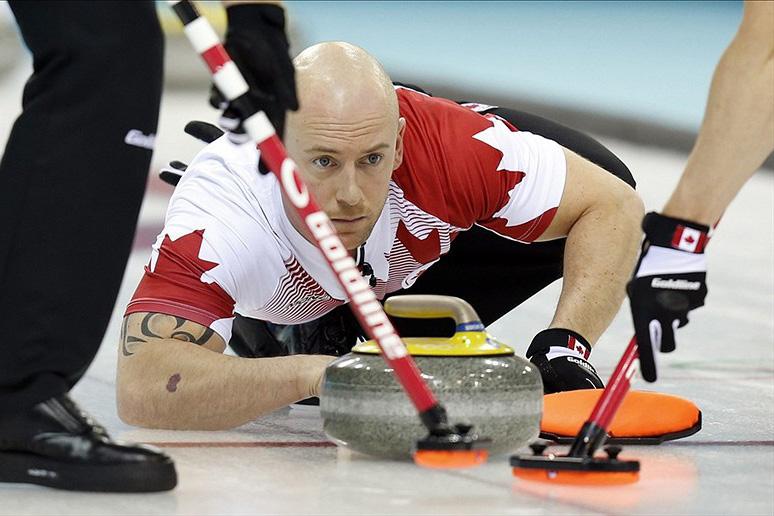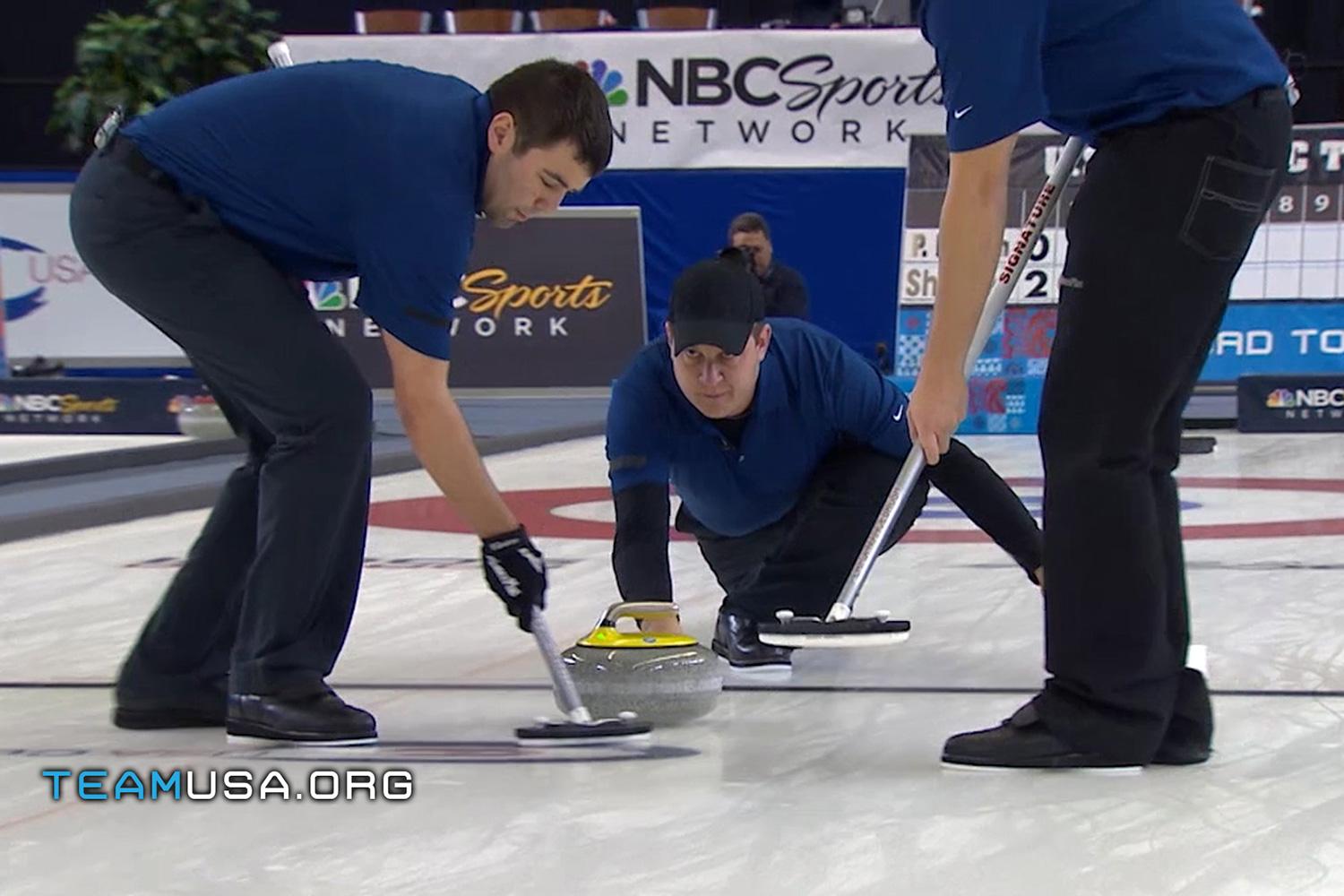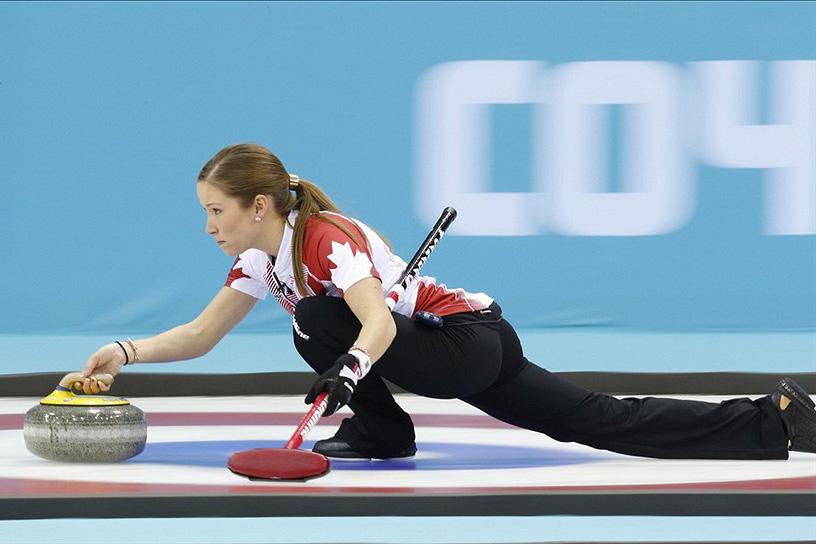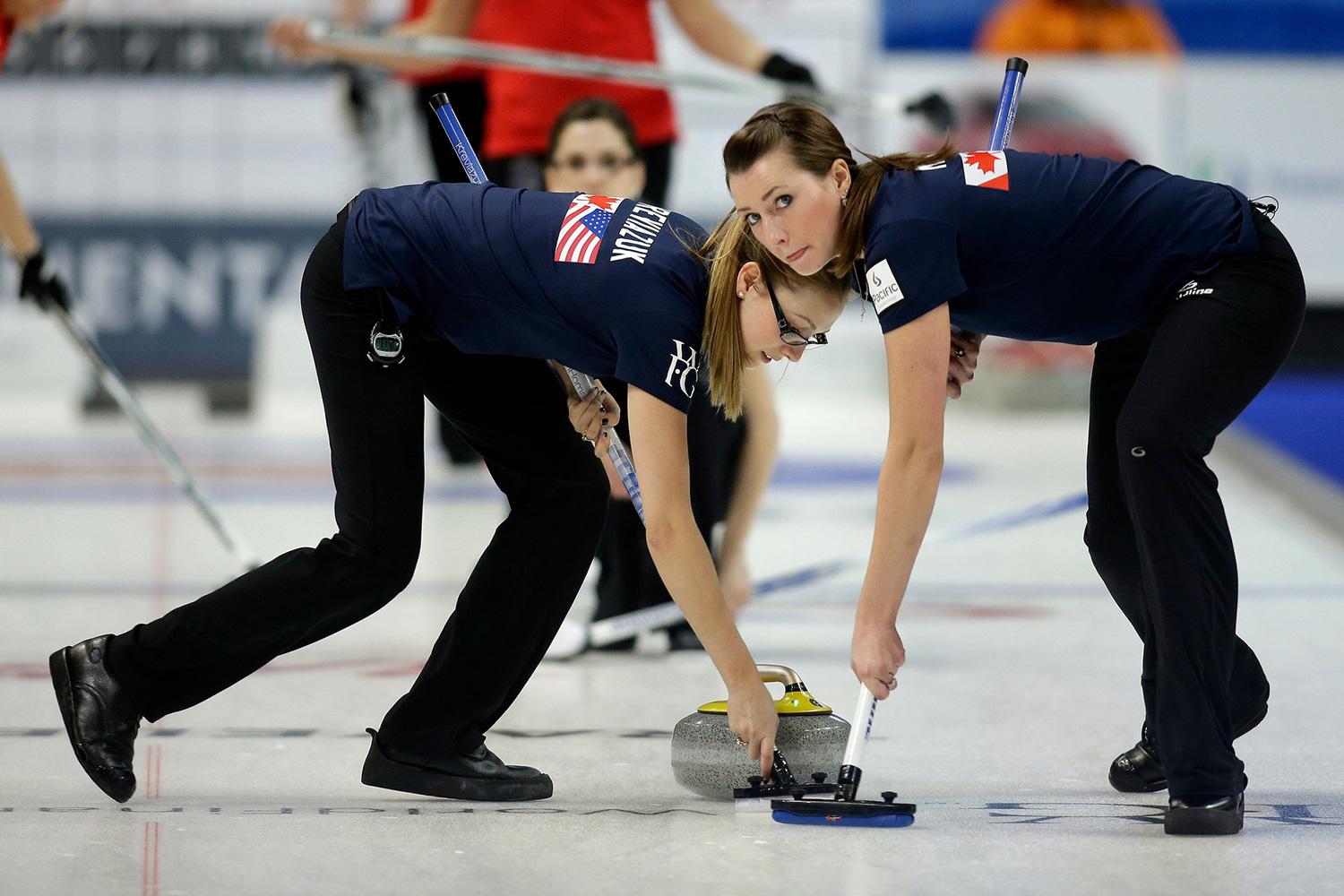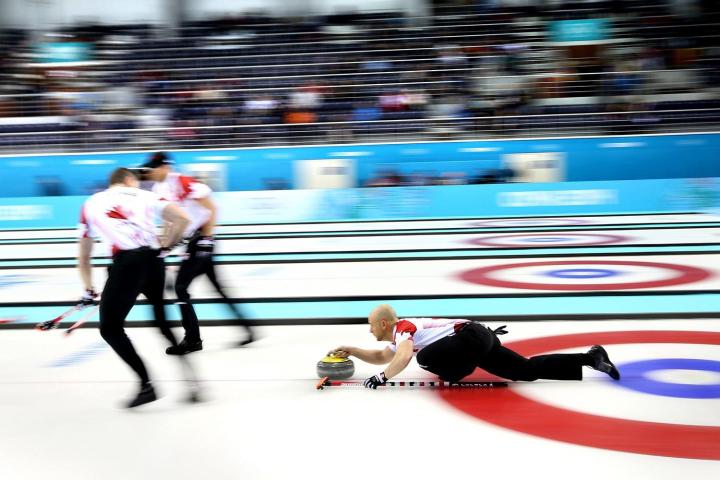
The vast majority of winter Olympic sports are inaccessible to the average viewer watching at home. You know you can’t ski like Ted Ligety, or skate like Shani Davis. You don’t have the first clue how to drive a bobsled, can’t fly from a halfpipe like Shaun White, and your dreams of suiting up for USA Hockey were scuttled when you never made the NHL. Or learned to play hockey. Or to even to ice skate.
But curling. Ah, curling. The true everyman sport. After drawing more buzz than speed skating and snowboarding at the Vancouver Olympics, curling has spent even more time on American television screens during the Sochi games. In Canada, where it’s wildly popular, curling is treated a lot like being in a bowling league. Competition, yes, but also friends and beer and quirky terminology (Hog line! Hammer! Hack Weight! The Manitoba Curl!).
Curling might look like shuffleboard on ice, but it’s really, really hard.
The aesthetic accessibility might lead some to believe it could be them in Sochi, on the world stage sliding stones or pushing brooms, in the big low-fi, low-tech party that is Olympic curling. They’d be wrong, of course, on every level. First, curling might look like shuffleboard on ice, but it’s really, really hard. Second, there’s more going on than meets the eye.
Don’t kick yourself for thinking otherwise, says John Benton, who represented the U.S. in Vancouver and is serving as a television analyst for NBC in Sochi. “This is a fairly common misperception,” he says. “There is a ton of physics going on out there, and to have the precision required to slide a 42-pound piece of polished granite 120 feet down a sheet of ice to a spot that is sometimes about a foot around takes a ton of technical know-how.”
The foundation is friction, and understanding how manipulating it can manipulate the stone. Sweeping ahead of the stone heats the ice ever so slightly, lessening friction and allowing it to travel faster. Then there’s the release, in which the stone’s handle is turned, rotating it and helping shape its path down the ice based on more frictional forces. Finally, there’s the physics of momentum, as stones must be used to knock each other around strategically. Sometimes a curler will want his stone to stop completely while knocking another out of scoring range, other times he may want to split the available momentum between two stones.
(Universities like to publish elaborate papers about this stuff. To have it explained more accessibly by a petite Canadian woman, click here.)
There is some gadgetry, as well. Some of it is very simple – timing devices, for example, help determine the relative speed of different stones on the ice. (In theory, they all ought to behave the same. In practice, they don’t.) Some broom heads contain a thermal reflective material, helping reflect the heat generated by sweeping back into the ice. Sliding shoes, Benton notes, contain low-friction materials like Teflon or stainless steel. At the Olympic level, stones have sensors embedded in the handles to detect whether a stone is released ahead of the foul, or “hog” line. Video analysis, both as a training device and scouting tool, is widely used.
Fun for sure, but not exactly the technological stuff of spy satellites and smartwatches.
Curling may be a quaint throwback sport ruled by the concepts of honor and sportsmanship, but it definitely leaps into modernity in the use of statistical analysis. The analytics movement now prevalent across America’s most popular major sports like the NBA also plays a big role in curling, particularly at the elite level.
Sliding shoes contain low-friction materials like Teflon or stainless steel.
“Most top teams are using some sort of statistical package to analyze each player, the whole team, the other team, for shooting percentages as well as game-plan execution,” says Benton. “These packages have become extremely detailed in what is tracked and how. Much more than simple shooting percentages.” That granularity can impact in-game decision making.
“An example might be that after three games, one player is showing that they are struggling (under 75 percent) throwing take-outs (removing the opponent’s stone) on the right-hand side of the ice, but only when throwing a counter-clockwise rotation. The team coach can do this analysis and then go back to the video of the game to get at a possible cause and solution for the player,” he says.
Despite its simple fundamentals, curling is actually a sport tailor made for analytics – heavily influenced by key strategic choices, and played at a slow enough pace to have those choices considered by a group of athletes already required to understand things like physics.
Meaning smart folk.
So as you get lost in your couch cushions wondering how you just spent the last four hours conquered by the hypnotic sights and sounds of televised Olympic curling, take comfort knowing you’re participating not just in the gentlemanly, ancient traditions of a sport tracing its roots back to 15th century Scotland, but a great leap (throw? slide?) forward into our future.
(Images and video courtesy of USA Curling, the Canadian Curling Association, Herbert Kratky via Shutterstock.com, and ProjectExplorer.org)
